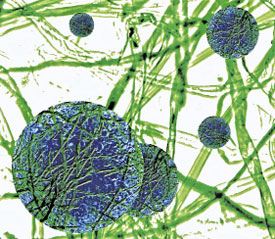 While many people are still trying to wrap their heads around the idea of nanoparticles – subatomic particles that may behave differently than larger particles of the same composition – the field of nanotechnology has moved ahead to include advanced nanomaterials, which could expose the workers who handle them to serious health risks.
While many people are still trying to wrap their heads around the idea of nanoparticles – subatomic particles that may behave differently than larger particles of the same composition – the field of nanotechnology has moved ahead to include advanced nanomaterials, which could expose the workers who handle them to serious health risks.
Writing on the NIOSH science blog, Vladimir Murashov, PhD; Paul Schulte, PhD; John Howard, MD give a brief overview of advanced nanomaterials and make a strong case for the further study of their properties and potential effects on human health.
Howard is the Director of NIOSH. Murashov is a Special Assistant for Nanotechnology to the NIOSH Director. He is a member of the U.S. Nanoscale Science, Engineering, and Technology subcommittee. He also leads projects for the ISO Technical Committee 229 (Nanotechnologies), World Health Organization and the Organization for Economic Cooperation and Development’s Working Party on Manufactured Nanomaterials. Schulte is the Director of the NIOSH Education and Information Division and Manager of the Nanotechnology Research Center.
“The main feature of advanced nanomaterials that distinguishes them from simpler nanomaterials, such as carbon black and nanoscale TiO2 used primarily as additives, is the ability of advanced nanomaterials to change or evolve properties during their use, as a result of intended and unintended reactions to the external environment,” they write.
Those changes in properties are what could pose a health risk to nanotechnology workers.
Advanced nanomaterials have plenty in common with their simpler nano counterparts, like the ability to reach and interact with human internal organs if inhaled. Other similarities: advanced nanomaterials could be dangerous when ( continue reading … )
Source: ISHN
Discussion
No comments yet.